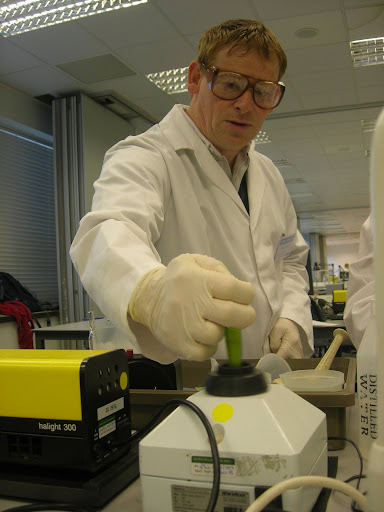The last TMA, and the good news is there is NO essay question!
Its designed as a bit of preparation for that ex*m that is coming up, so it's got a similar structure to some parts of the exam.
The first question is a graph giving infection rates from Schistosoma mansoni - a blood fluke. In this case you have to answer a number of sub questions about possible infections and how the data is interpreted. There is 15 marks in all for this question. Some of the parts a little ambiguous about what is being compared with what but its not too bad.
The next one is a similar sort of question, some graphs relating female dominance in red deer to their propensity to produce offspring and survive the winter. Another 15 marks.
Question 3 is only four marks, and you have to compare and contrast smell and taste organs. Then a quick sentence on how sight works.
Question 4 asks you to give four differences between the structural organisation of sponges and cnidarians for four marks. Not too bad again, but I had to go back to the book to tease them all out.
Question 5 is two questions about insects and spiders and crustaceans - another 4 marks.
Question 6 is another 4 pointer about oxygen dissociation in haemoglobin.
Question 7 asks for four features essential for flight. Another 4 points.
Next you get a choice. Question 8 and 9 are both worth 50 points, and involve sketching from the digital microscope. Question 8 is about plant tissues and 9 about animal tissues. For some reason I seem to have been drawn into the plant side of things, which is not what I had planned at the start of the course. Anyway, I go with the plant question, and have to draw and label low and high power sketches of a vascular bundle and a phloem sieve plate and surrounds.
This is followed up by a number of questions about phloem and apoplastic and symplastic flow.
All in all its not a bad TMA. As you are answering specific questions, I feel there is a lot less to get wrong or forget to cover. However time, and my tutor will tell how well I've done. In the meantime its a bit of a wake up about how little I know in detail without the books.
I mean, I know most of the way that phloem and stuff works, but without the books I can't recall which is the one that is apoplastic and which symplastic. I think its stuff like this that I will get unstuck on in the ex*m.
skip to main |
skip to sidebar

Life studying for a 2nd time around with the Open University and others.
My Latest Blip
About Me
Topics
- A251 (7)
- astronomy (1)
- CMA (4)
- coursera (8)
- courses (40)
- degree (1)
- ECA (2)
- exam (7)
- experiment (3)
- G+C (7)
- html (1)
- intro (1)
- java (1)
- quantum mechanics (1)
- residential (43)
- S103 (19)
- S170 (1)
- S171 (1)
- S193 (1)
- S194 (4)
- S196 (1)
- S204 (21)
- s205 (18)
- S282 (17)
- s283 (8)
- S320 (12)
- S366 (11)
- S377 (10)
- SD329 (9)
- sk195 (2)
- sxr103 (3)
- SXR208 (9)
- sxr270 (7)
- sxr270tutor (7)
- SXR375 (9)
- SXR376 (8)
- TMA (49)
- tutorial (4)
- udemy (3)




No comments:
Post a Comment